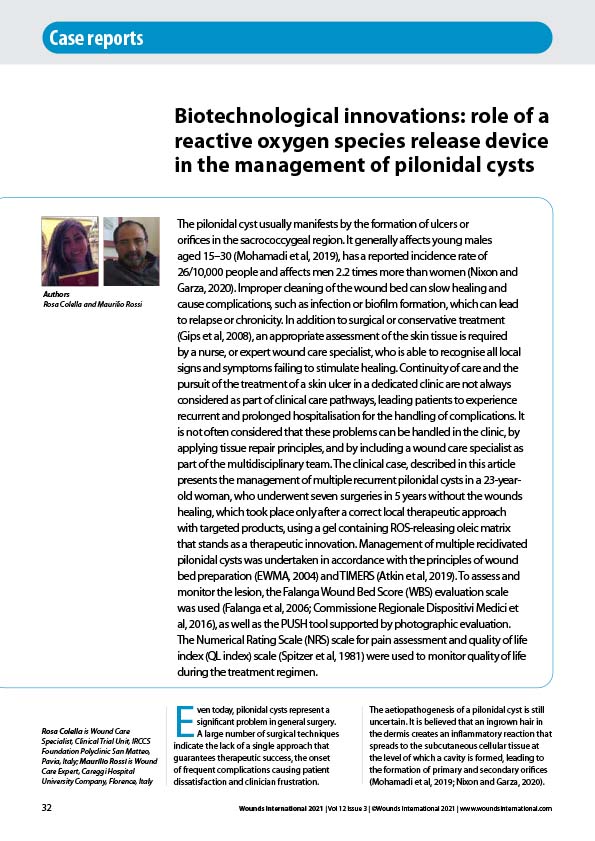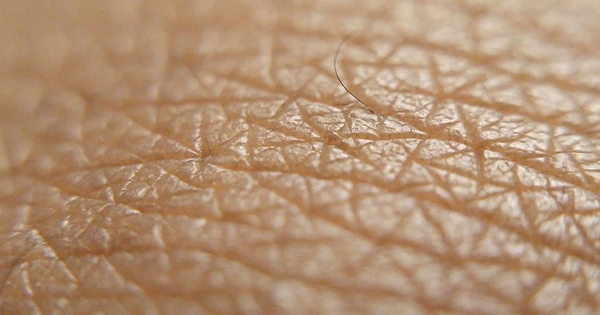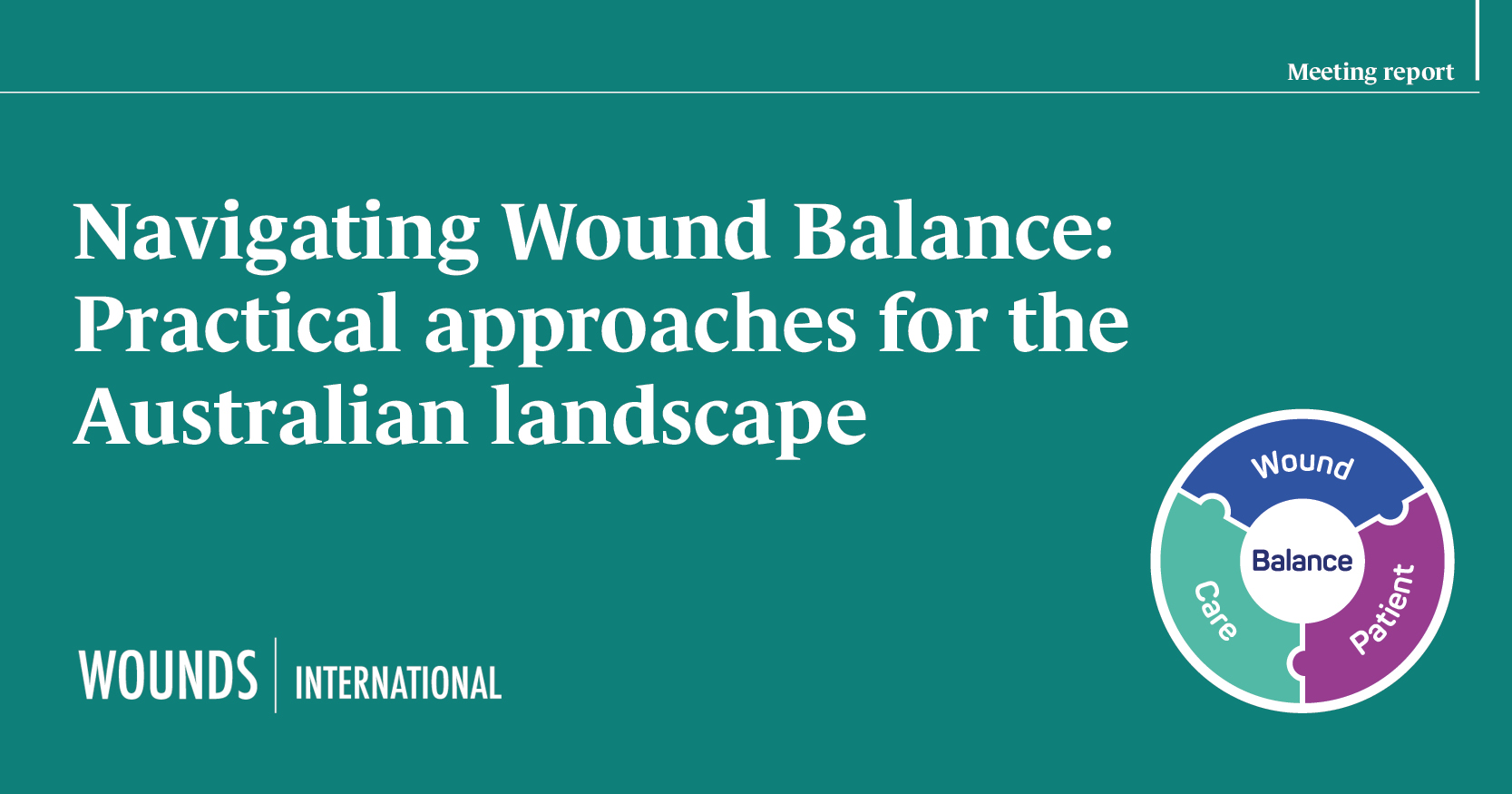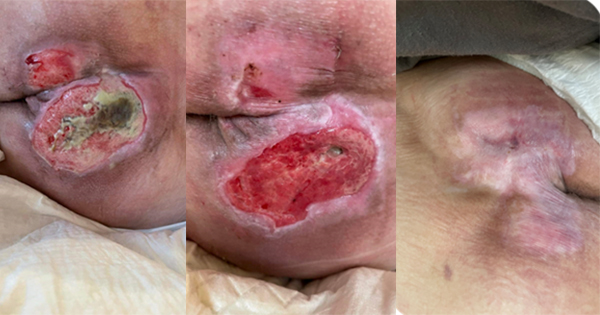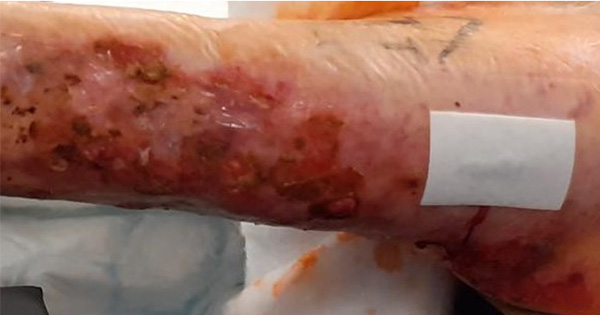The pilonidal cyst usually manifests by the formation of ulcers or orifices in the sacrococcygeal region. It generally affects young males aged 15–30 (Mohamadi et al, 2019), has a reported incidence rate of 26/10,000 people and affects men 2.2 times more than women (Nixon and Garza, 2020). Improper cleaning of the wound bed can slow healing and cause complications, such as infection or biofilm formation, which can lead to relapse or chronicity. In addition to surgical or conservative treatment (Gips et al, 2008), an appropriate assessment of the skin tissue is required by a nurse, or expert wound care specialist, who is able to recognise all local signs and symptoms failing to stimulate healing. Continuity of care and the pursuit of the treatment of a skin ulcer in a dedicated clinic are not always considered as part of clinical care pathways, leading patients to experience recurrent and prolonged hospitalisation for the handling of complications. It is not often considered that these problems can be handled in the clinic, by applying tissue repair principles, and by including a wound care specialist as part of the multidisciplinary team. The clinical case, described in this article presents the management of multiple recurrent pilonidal cysts in a 23-yearold woman, who underwent seven surgeries in 5 years without the wounds healing, which took place only after a correct local therapeutic approach with targeted products, using a gel containing ROS-releasing oleic matrix that stands as a therapeutic innovation. Management of multiple recidivated pilonidal cysts was undertaken in accordance with the principles of wound bed preparation (EWMA, 2004) and TIMERS (Atkin et al, 2019). To assess and monitor the lesion, the Falanga Wound Bed Score (WBS) evaluation scale was used (Falanga et al, 2006; Commissione Regionale Dispositivi Medici et al, 2016), as well as the PUSH tool supported by photographic evaluation. The Numerical Rating Scale (NRS) scale for pain assessment and quality of life index (QL index) scale (Spitzer et al, 1981) were used to monitor quality of life during the treatment regimen.

